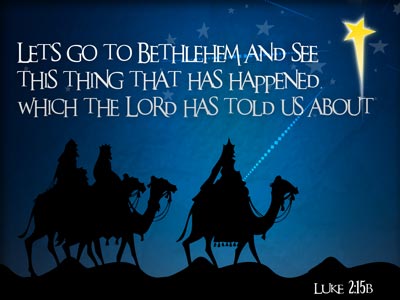-
The Babe And The Bell Series
Contributed by Glenn Pease on Apr 8, 2021 (message contributor)
Summary: It is no wonder that bells have become a symbol of Christmas, for God chose the bell to be a symbol of joy and victory in His presence. There are numerous types of bells, but all of them have some positive value, and thus, have something in common with the Babe of Bethlehem.
Bells are one of the common symbols of Christmas, because all through history, bells have
been used to play the role of the angels on that first Christmas. Bells ring forth the message
of joy. The bell and the babe of Bethlehem are linked in many ways. Nowhere is this more
evident, than when you compare the history of our famous Liberty Bell with that of the
Christ-child.
Both designed to convey a message of good news. Jesus was God's Word, and He came to
be heard. He came to sound forth a message of joy and liberty. This was the purpose of the
Liberty Bell, as well. It was originally ordered by William Penn, the Christian founder of
Pennsylvania. It was to celebrate the 50th anniversary of religious freedom in Pennsylvania
from 1701-1751. The inscription on the bell is from Lev. 25:10, "Proclaim liberty throughout
all the land unto all the inhabitants thereof." This bell, like the babe of Bethlehem, was to bring
good news of great joy to all people.
The Liberty Bell was not cast and hung to ring happily ever after, but like the babe of
Bethlehem, it had a battle for survival. The bell became famous on July 8, 1776, when the
first public reading of the Declaration Of Independence, took place in Philadelphia. The bell
began it's jubilant ringing in the tower of Independence Hall. That made the bell a great
symbol of the birth of freedom. The star of Bethlehem was a symbol of the birth of the King
of freedom, who came to set us free from the bondage to sin. Such symbols are a threat to
those who oppose liberty.
Herod would shoot the star from the sky, if he could, and so he sent his troops to silence
the Word, residing in that babe of Bethlehem. The bell was the object of a Herod like plot, as
well. The British General Howe, and 17,000 troops attacked Philadelphia in 1777. They
fought their way to the Liberty Bell to destroy this symbol of American freedom. Like
Herod, they came close to succeeding in their evil plot. They came within a rifle shot of the
bell. But in the night, they Americans lifted the 2,000 pound bell from the tower. They put it
on a farm wagon, covered it with potato sacks, and got it to the Zion Reformed Church in
Allentown. It remained hidden there for nearly a year. The babe of Bethlehem was taken off
to Egypt, and so both Herod and Howe were foiled in their attempts to destroy the babe or
the bell.
Both of them came back. Jesus returned to a life of teaching and service to His people,
and the Liberty Bell was returned to the tower in Independence Hall, where it rang out for
many great events. On July 8,1835, it was tolling for the funeral of Chief Justice John
Marshall. It was at this time that it cracked and was silenced. The babe of Bethlehem was
also silenced after much blessed service, and was also broken on the cross.
The parallel of the babe and the bell does not end there. The Liberty Bell was given a
resurrection, and the crack was filled in. It was ringing again in 1846 for the birthday of
George Washington. But near noon it cracked again, and after that brief restoration, it has
been silent ever since. Jesus also rose from the silence of the grave and after a brief time with
His disciples, He ascended to the Father. This fascinating parallel of the babe and the bell
introduces us to the role that bells have played in the history of Christmas. We do not hear
the angels, as did the shepherds, but if we listen to the Christmas bells, and know their
history, we can hear the same message that leads to the Savior.
The wise men were led by sight to the Savior. God gave them a star. But the shepherds
were led by sound. God gave them a message through the ear. Both are a part of God's
methods, and both of them touch us all, in the sounds and sights of Christmas. We live in a
visual oriented culture, and are more impressed by sight, than sound. But we need to learn to
listen too., for by means of the ear we can enter more deeply into the full message of
Christmas. Sound has the ability to produce emotion. The sound of bells can move us to
enjoy God's gift, all the more, if we know their history.
There is not a lot about bells in the Bible, but the little there is, tells us that God loves the
sound of bells. He had them play a role in the Old Testament that links them to the role of His Son,

 Sermon Central
Sermon Central



